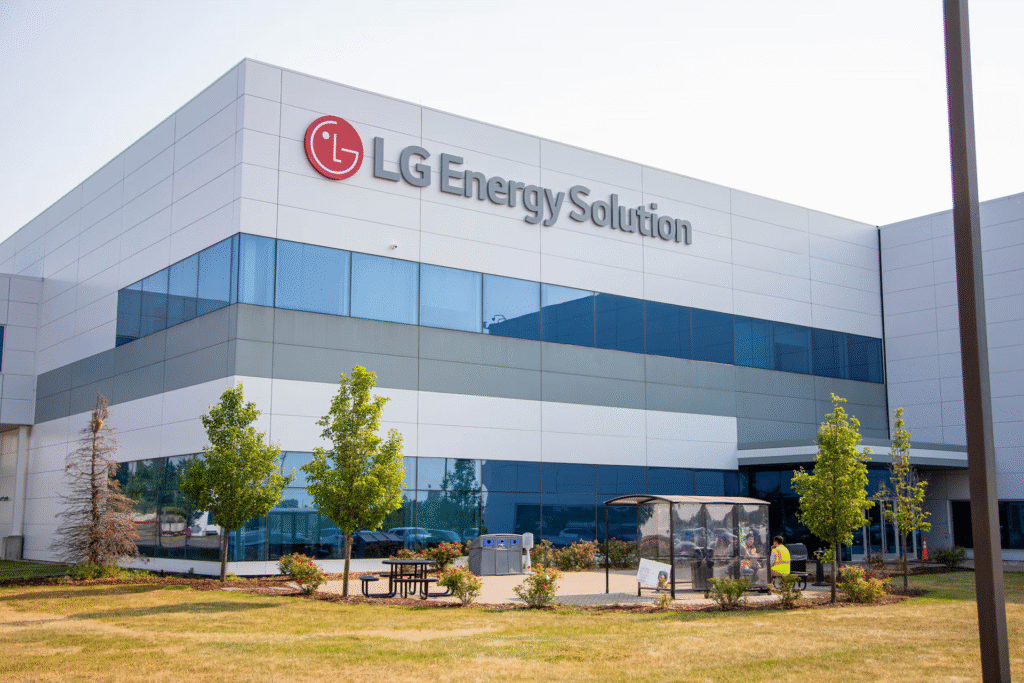Lithium iron phosphate batteries are prized for their safety, lower cost, and longevity compared to traditional lithium-ion batteries that use nickel, manganese, and cobalt. While they offer lower energy density, LFP batteries are ideal for stationary energy storage systems like Tesla’s Megapack, which powers grid-scale projects and data centers. The chemistry’s stability reduces the risk of thermal runaway, making it a reliable choice for large-scale applications. Tesla’s adoption of LFP for its energy business aligns with a broader industry trend toward cost-effective, durable battery solutions.
The deal comes as Tesla faces challenges with U.S. tariffs on Chinese battery imports, which have significantly impacted its energy storage operations. In April 2025, Tesla’s Chief Financial Officer, Vaibhav Taneja, noted that these tariffs had an “outsized” effect on the company’s energy division, prompting a search for non-Chinese suppliers. LGES, one of the few U.S. producers of LFP batteries, offers a domestic alternative, leveraging its Michigan facility that began production in May 2025.
Details of the LGES Partnership
LGES’s Michigan factory, a $1.4 billion expansion of its existing operations, will supply Tesla with LFP batteries tailored for energy storage, not electric vehicles. The contract’s flexibility allows for an extension of up to seven years and increased supply volumes based on future negotiations, reflecting Tesla’s confidence in growing demand for energy storage. This deal, equivalent to roughly a quarter of LGES’s annual sales, positions the South Korean company as a key player in the U.S. battery market.
The agreement also highlights LGES’s first-mover advantage in U.S. LFP production. Unlike competitors like Samsung SDI and SK On, which have yet to enter the American LFP market, LGES has established itself as a leader, supplying major automakers like General Motors and Hyundai. Its Michigan plant, operational since May, gives it a head start in meeting the growing demand for domestically produced batteries, driven by both policy incentives and market needs.
Navigating Tariffs and Supply Chain Challenges
Tesla’s move to source LFP batteries from LGES is a direct response to U.S. trade policies aimed at reducing dependence on Chinese battery components. China has long dominated LFP technology, with companies like CATL and BYD leading global production. However, escalating tariffs and regulatory pressures, including the Inflation Reduction Act’s push for localized supply chains, have forced companies like Tesla to diversify. Tesla is also developing its own LFP manufacturing facility in Nevada, expected to come online by late 2025, but it will initially meet only a fraction of its needs.
The LGES deal follows Tesla’s recent $16.5 billion agreement with Samsung Electronics for chip supplies from Texas, signaling a broader strategy to bolster U.S.-based partnerships. These moves align with global trends, as automakers and battery manufacturers scramble to secure tariff-friendly supply chains. For Tesla, the LGES contract ensures a stable supply of batteries for its Megapack business, which is critical as demand for energy storage surges due to AI data centers and renewable energy integration.
Implications for Tesla’s Energy Business
Tesla’s energy storage division, bolstered by products like the Megapack, has become a cornerstone of its growth strategy. The company’s focus on grid-scale storage supports utilities, businesses, and communities transitioning to renewable energy. By securing U.S.-made LFP batteries, Tesla can mitigate tariff-related costs and improve the competitiveness of its energy solutions. The deal also positions Tesla to capitalize on the growing energy storage market, projected to expand as data centers and renewable grids demand reliable power.
For consumers, this shift may translate to more affordable and resilient energy storage systems. LFP batteries’ lower production costs could help Tesla maintain competitive pricing, while their durability ensures longer-lasting installations. The deal also reduces exposure to supply chain disruptions, a critical factor given the volatile U.S.-China trade landscape.
The Bigger Picture for U.S. Battery Production
LGES’s role in this deal underscores the U.S.’s emerging status as a hub for battery manufacturing. Alongside Tesla’s Nevada facility and Ford’s LFP plant in Michigan, LGES’s expansion reflects a broader industry pivot toward domestic production. General Motors, through its Ultium Cells joint venture with LGES, is also scaling up LFP production in Tennessee, signaling a renaissance for a technology first developed in the U.S. but long dominated by China.
This shift could have far-reaching effects, from reducing reliance on foreign imports to creating jobs in states like Michigan and Tennessee. However, challenges remain, including technological hurdles and market uncertainties. LGES’s early lead gives it an edge, but as competitors like Ford and GM ramp up, the U.S. LFP market could become increasingly competitive.
What’s Next for Tesla and LGES
The Tesla-LGES partnership is a pragmatic step toward a more self-sufficient supply chain, but it’s not without risks. The contract’s start date in 2027 suggests Tesla is planning for long-term growth, but market dynamics, such as fluctuating EV demand and evolving trade policies, could alter its trajectory. LGES, meanwhile, is hedging its bets by exploring conversions of EV battery lines to energy storage production, adapting to a slowdown in EV sales.
For users of Tesla’s energy products, the deal promises greater reliability and potentially lower costs in the future. As Tesla continues to innovate in both energy and automotive sectors, its collaboration with LGES could set a precedent for how global companies navigate trade barriers and localize critical technologies.
